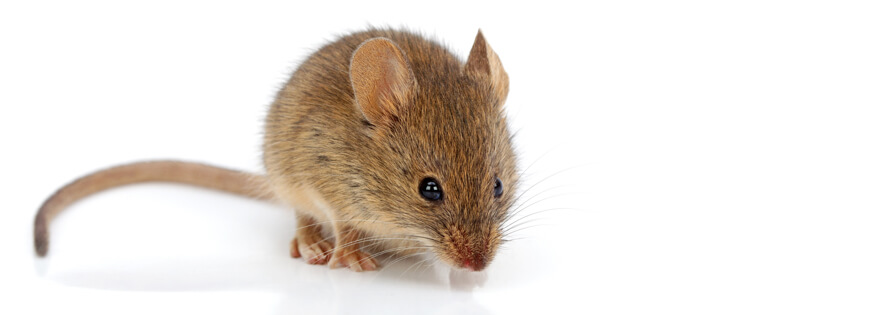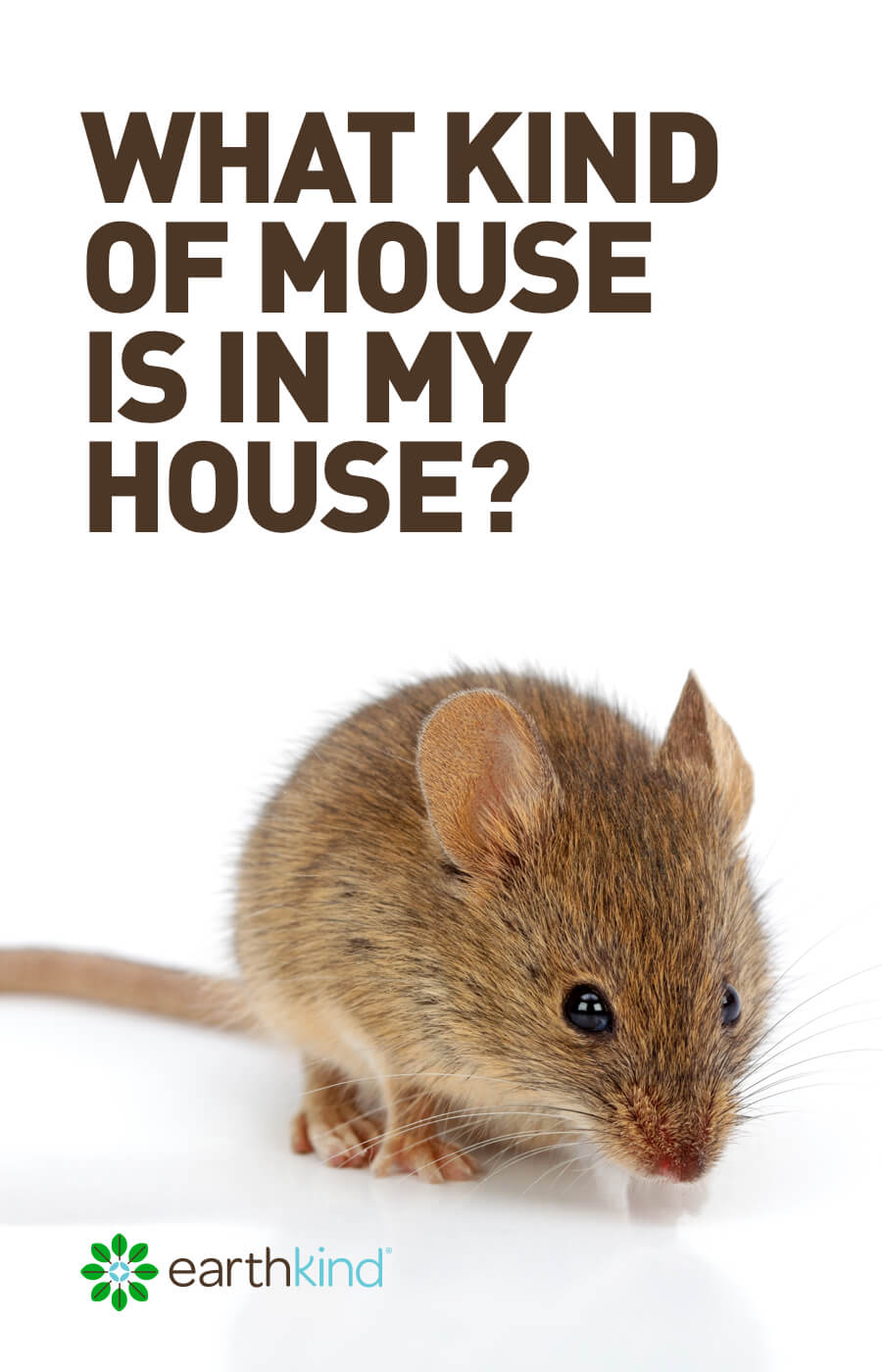What Kind Of Mouse Is In My House?
By: EarthKind
Have you noticed weird things around your house like little pellets in the shape of black rice, strange sounds at night, or mysterious damage to cords, cushions and cardboard? These are all signs of rodent activity.
Knowing the signs of mice will help you solve the problem, but you might want to know even more. Is it a rat or a mouse? What kind of mouse is it? Why did it pick my house? And most importantly; how do I get it to leave?
There are many different types of rodents. If you’ve found a furry intruder in your home, two of the most likely culprits are a house mouse (Mus musculus) or a field mouse (AKA deer mouse or Peromyscus). Norway rats and roof rats have also been known to infest homes, businesses and other structures.
Identifying a House Mouse
A house mouse can adapt to almost any environment. These rodents can be found in all parts of the world. They infest homes, businesses, farm buildings, planes, trains, automobiles and anywhere else you can think of! This ability to survive in a wide range of environments is one of the traits that makes mice so successful as a species and so persistent as a pest.
House mice range in color from light brown to grey to nearly black. A key physical characteristic is their hairless tail that’s almost as long as their body.
These critters are very small, measuring 5-8 inches in length (including the tail) and they weigh less than an ounce. Their small size gives them the upper hand when sneaking into inconspicuous spaces. A house mouse only needs to fit their head through an opening and the rest of their body will be able to squeeze through. Openings that are a mere ¼ of an inch wide, look like a wide-open door with welcome signs to these household pests.
Keep your home pest free with simple, effective solutions. Subscribe and save!
Identifying a Deer Mouse
Deer mice are found throughout most of North America, although different sub-species are distinct to specific geographic regions. Commonly referred to as deer mice, field mice, or the white-footed deer mouse, these cute little critters are likely the mice you see on Christmas cards or in paintings at holiday craft fairs. These nearly famous creatures even appeared on a United States postage stamp. However, being famous doesn’t mean you’re welcome in the home!
Deer mice are similar in size to house mice, although they may be just slightly larger. Deer mice have large protruding black eyes, large hairless ears, a furry tail, white feet and fur that ranges in color from greyish brown to light brown with white or light-colored underbellies. This contrast in color between the back, the belly and the feet make for one of the most easily visible ways to distinguish a house mouse from a deer mouse.
 How to Tell the Difference
How to Tell the Difference
Knowing the difference between deer mice and house mice will help you get rid of a mouse infestation. Although both types of mice may infest homes, deer mice are rarely found in urban areas and prefer rural or semi-rural settings. House mice are opportunistic pests and will nest in all kinds of places like voids in appliances such as stoves, refrigerators and dishwashers, or in the base of cabinets, insulated walls, and more. Deer mice tend to prefer the exterior perimeter of homes and buildings, particularly ledges beneath decks, garden sheds, detached garages, barns and farm equipment.
House mice tend to build small globe-shaped nests and stay within the immediate area close to their nests, usually only traveling 10-30 feet away. They keep their nests tidy and organized, designating different areas in their home range as bathrooms. Conversely, deer mice are messier and build larger nests. Deer mice are unsanitary, contaminating their own nests with urine and feces, causing them to abandon nests after a few weeks and build new ones elsewhere. They maintain a larger home range and store caches of seeds, nuts and other foods in multiple locations.
How to Get Rid of Mice
In addition to being small, mice are incredibly sneaky! They have been described as “cryptobiotic,” meaning they are biologically designed to be secretive and escape our notice. Nocturnal feeding habits, quick speeds, extreme agility and unpredictable behavior work together to help mice avoid danger, survive and thrive.
Like any other living creature, mice seek shelter and food. They will choose warm places where they can hide from danger to keep their offspring safe, preferring areas where food and water are nearby. Keeping your home neat and tidy will reduce hiding areas and limit available food sources, making it less welcoming to pests. Inspect potential entry points such as the seals around doors and windows, dryer vents, and plumbing and utility lines to make sure there are no openings mice can use to get inside.
Since mice tend to be most active during low-light hours near dawn and dusk, their eyesight is less reliable than their other senses. Rodents rely heavily on a highly developed sense of smell to help them navigate, find food, identify other mice and avoid predators. Protect your home with a scent based rodent repellent to prevent infestations.






 How to Tell the Difference
How to Tell the Difference

 day
day